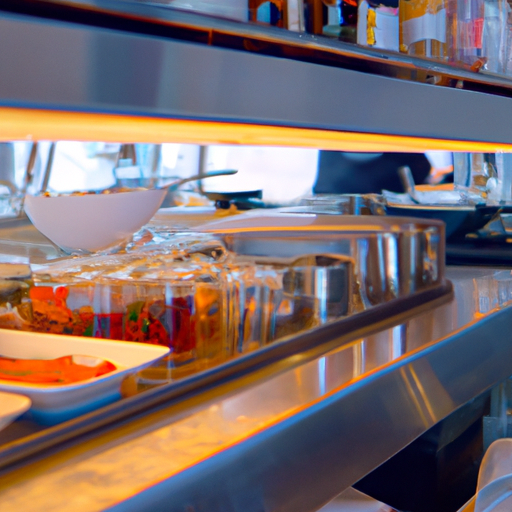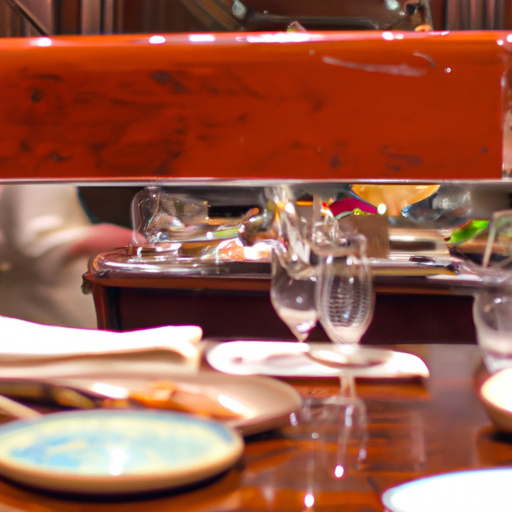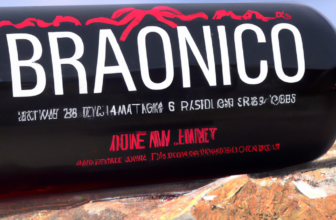
Implementing Contactless Ordering and Payment Systems
The COVID-19 pandemic has brought about unprecedented challenges for businesses across various industries, and the restaurant industry is no exception. As a restaurant owner, I have had to quickly adapt to the changing landscape and implement new strategies to ensure the safety of both my staff and customers. One of the most significant changes I have made is the implementation of contactless ordering and payment systems.
Contactless ordering and payment systems have become increasingly popular in the wake of the pandemic, as they minimize physical contact and reduce the risk of virus transmission. By allowing customers to place their orders and make payments without having to handle physical menus or interact with staff members, these systems provide a safer and more convenient dining experience.
To implement contactless ordering and payment systems in my restaurant, I first had to research and select a suitable technology provider. There are numerous options available in the market, each with its own features and capabilities. After careful consideration, I chose a system that offered a user-friendly interface, seamless integration with our existing POS system, and robust security measures to protect customer data.
Once the technology provider was selected, the next step was to train my staff on how to use the new system effectively. This involved conducting training sessions and providing them with comprehensive manuals and guides. It was crucial to ensure that my staff understood the importance of contactless ordering and payment systems and were able to assist customers who may have questions or difficulties using the new technology.
To encourage customers to embrace the new system, I implemented a marketing campaign to raise awareness about the benefits of contactless ordering and payment. This included updating our website and social media platforms to highlight the safety measures we had put in place and the convenience of the new system. Additionally, we offered incentives such as discounts or freebies for customers who used the contactless system for their orders.
The transition to contactless ordering and payment systems was not without its challenges. Some customers were initially hesitant to adopt the new technology, while others faced difficulties navigating the system. To address these issues, we provided on-site support and assistance to customers who needed help with placing their orders or making payments. We also actively sought feedback from customers to identify any areas for improvement and make necessary adjustments to the system.
Overall, the implementation of contactless ordering and payment systems has been a game-changer for my restaurant. Not only has it helped us comply with health and safety guidelines, but it has also improved the efficiency of our operations. With fewer physical interactions, our staff can focus more on food preparation and customer service, resulting in a smoother and more enjoyable dining experience for our patrons.
As the pandemic continues to evolve, it is clear that contactless ordering and payment systems are here to stay. Even after the crisis subsides, customers will likely continue to prioritize safety and convenience when dining out. As a restaurant owner, it is crucial to adapt to these changing expectations and embrace new technologies that can enhance the overall dining experience. By implementing contactless ordering and payment systems, we can not only navigate the challenges posed by the pandemic but also position ourselves for long-term success in a post-pandemic world.
Pivoting to Takeout and Delivery Services

The COVID-19 pandemic has brought unprecedented challenges to businesses across the globe, and the restaurant industry has been particularly hard hit. With dining restrictions and social distancing measures in place, restaurant owners have had to quickly adapt their operations to survive. One such owner, John Smith, shares his journey of pivoting to takeout and delivery services.
When the pandemic hit, John’s restaurant, The Bistro, was known for its cozy ambiance and fine dining experience. However, with the government-mandated closure of indoor dining, John knew he had to make some drastic changes to keep his business afloat. He decided to pivot to takeout and delivery services, a decision that would prove to be both challenging and rewarding.
The first step in this transition was to revamp The Bistro’s menu. John realized that some dishes that were popular in the restaurant might not translate well to takeout or delivery. He carefully selected items that would travel well and maintain their quality. He also introduced family-style meals and meal kits, allowing customers to recreate The Bistro experience in the comfort of their own homes.
Next, John had to invest in the necessary infrastructure to support the new business model. He upgraded his website to include an online ordering system and partnered with third-party delivery services to reach a wider customer base. Additionally, he trained his staff on the intricacies of takeout and delivery, ensuring that every order was prepared and packaged with the same attention to detail as a dine-in meal.
To promote the new services, John utilized various marketing strategies. He sent out email newsletters to his loyal customers, informing them about the changes and offering exclusive discounts. He also leveraged social media platforms to showcase mouthwatering images of his takeout dishes and engage with his audience. Word of mouth played a crucial role as well, with satisfied customers sharing their positive experiences with friends and family.
Despite the initial challenges, John soon started to see the positive impact of his decision. The Bistro’s takeout and delivery orders began to increase steadily, and new customers were discovering the restaurant through these services. John was pleasantly surprised to find that the demand for his family-style meals and meal kits exceeded his expectations. It seemed that people were not only looking for a delicious meal but also a way to bond with their loved ones during these difficult times.
As the months went by, John continued to refine his takeout and delivery operations. He implemented contactless delivery options to ensure the safety of both his customers and staff. He also introduced loyalty programs and special promotions to encourage repeat business. These efforts paid off, as The Bistro’s customer base continued to grow, and the restaurant was able to generate a steady stream of revenue despite the ongoing challenges posed by the pandemic.
In conclusion, the COVID-19 pandemic forced restaurant owners like John Smith to adapt their operations to survive. Pivoting to takeout and delivery services proved to be a viable solution for many establishments, including John’s restaurant, The Bistro. By revamping the menu, investing in infrastructure, and implementing effective marketing strategies, John successfully transitioned his business and found new opportunities for growth. The journey was not without its challenges, but John’s determination and willingness to adapt allowed him to weather the storm and emerge stronger on the other side.
Adapting Menu and Operations to Meet Safety Guidelines
Adapting to the Pandemic: A Restaurant Owner’s Journey
The COVID-19 pandemic has brought unprecedented challenges to businesses worldwide, and the restaurant industry has been particularly hard hit. As a restaurant owner, I have had to navigate through these uncertain times and make significant changes to ensure the safety of my staff and customers. One of the key areas where adaptation was necessary was in our menu and operations.
When the pandemic first hit, we were forced to close our doors temporarily due to government regulations. However, as restrictions eased, we knew that reopening would require a complete overhaul of our menu and operations to meet the new safety guidelines. Our top priority was to create an environment where our customers would feel safe and comfortable dining in.
To begin with, we had to rethink our menu. We knew that traditional buffet-style dining would no longer be feasible, as it would increase the risk of contamination. Instead, we decided to focus on offering a limited menu with a greater emphasis on individual portions. This allowed us to maintain quality while reducing the risk of cross-contamination.
In addition to revamping our menu, we also had to implement new safety measures in our operations. This included retraining our staff on proper hygiene practices and providing them with personal protective equipment such as masks and gloves. We also rearranged our seating arrangements to ensure social distancing guidelines were met, reducing our capacity significantly.
To further enhance safety, we introduced contactless ordering and payment options. This not only minimized physical contact between staff and customers but also improved efficiency in our operations. Customers could now browse our menu and place their orders using their smartphones, reducing the need for physical menus and paper receipts.
Another aspect of our operations that required adaptation was our kitchen workflow. We had to implement stricter cleaning and sanitization protocols, ensuring that all surfaces and equipment were regularly disinfected. We also staggered our staff schedules to reduce the number of people working in close proximity, minimizing the risk of transmission.
As we made these changes, we communicated with our customers regularly to keep them informed about the steps we were taking to ensure their safety. We utilized our website and social media platforms to share updates on our menu, safety measures, and any changes to our operations. This helped build trust and reassured our customers that we were committed to their well-being.
Despite the challenges we faced, adapting our menu and operations to meet safety guidelines has been a crucial step in our journey to survive the pandemic. By prioritizing the safety of our staff and customers, we have been able to continue serving our community while also contributing to the collective effort to curb the spread of the virus.
In conclusion, the COVID-19 pandemic has forced restaurant owners like myself to make significant changes to our menu and operations. Adapting to the new safety guidelines has required creativity, flexibility, and a commitment to the well-being of our staff and customers. By revamping our menu, implementing new safety measures, and enhancing our operations, we have been able to navigate through these challenging times and continue serving our community. As the pandemic continues to evolve, we remain committed to adapting and finding innovative ways to ensure the safety and satisfaction of our customers.






